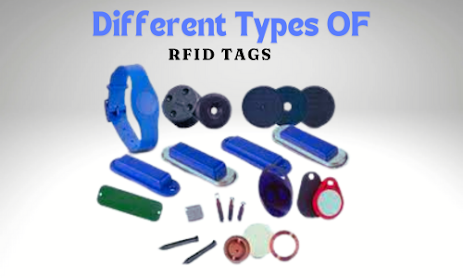Innovative Uses of RFID Tags in Different Industries
Radio Frequency Identification (RFID) technology is changing many industries by providing new solutions to old problems. RFID tags store and transmit data using radio waves and are crucial in retail, healthcare, and logistics. This article looks at how RFID tags are used in these industries through practical applications and real-world examples.
What is RFID Technology?
RFID
technology confidently utilizes electromagnetic fields to automatically
identify and track tags affixed to objects. These tags contain electronically
stored information that can be read from a distance without requiring
line-of-sight. RFID systems are comprised of three essential components: the
RFID tag or chip, the RFID reader,
and the RFID software:
- RFID Tags: These are small devices
containing a microchip and an antenna. The chip stores unique data about
the item, and the antenna transmits this data to RFID readers.
- RFID Readers: These devices emit radio
waves and receive signals back from the tags. Depending on the
application, they can be either handheld or fixed.
- RFID Software: This software processes
the data collected by the readers and integrates it into the
organization's management system.
Types of RFID Tags
There are
three main types of RFID tags, each suited for different applications:
1. Passive RFID Tags
Passive
RFID tags are definitively powered by the electromagnetic energy transmitted
from an RFID reader, thus eliminating the need for an internal power source. These
tags are small, inexpensive, and have a long lifespan, making them ideal for
inventory management and asset tracking.
2. Active RFID Tags
Active
RFID tags have their power source, usually a battery, which allows them to
transmit signals over longer distances. These tags are larger and more
expensive but are useful for tracking high-value items or assets over large
areas.
3. Semi-Passive RFID Tags
Semi-passive
RFID tags, also known as battery-assisted passive (BAP) tags, have a small
battery to power the microchip but rely on the reader to communicate. These
tags are a hybrid between passive and active tags, offering a balance of range
and cost.
There are
some Examples of RFID Tags for Various Applications Uses -
These
tags have various applications such as security, tracking, identification,
access control, inventory management, warehouse management, process automation,
and other customized solutions. They come in different types, including passive
tags (without battery) and active tags (with in-built battery). These tags are
commonly used for assets management, automotive component tracking, industrial
manufacturing, and more.
·
Tyre Tags
·
Windshield
Tags
·
Railways
Tags
·
RFID
Garment Tags
·
RFID
Jewelry Tag
·
High
Temperature Tag
·
Mount on
Metal Tags & Labels
·
Hang Tags
·
Library
Tags
·
RFID
Active Tags
·
RFID Electronic
Seals
·
Solar
Tags
·
Sports
Timing Tags
·
Nail Tags
·
Bolt Tags
·
High-Temperature
PCB Tags
·
Strip
Tags
RFID Tags in Retail
The retail industry
has embraced RFID technology to enhance inventory management, improve customer
experience, and streamline operations.
Inventory Management
Retailers
like Walmart and Zara use RFID tags to keep track of their inventory in real
time. Each item is tagged, allowing for accurate and instant updates on stock
levels. This reduces the time spent on manual stock checks and minimizes the
risk of stockouts or overstocking.
Theft Prevention
RFID tags
are crucial for theft prevention. Retailers embed tags in products to trigger
alarms if items are removed from the store without being paid for. This deters
theft and helps recover stolen goods.
Enhanced Customer Experience
Innovative
retailers are using RFID-enabled interactive mirrors. When a customer brings a
tagged item close to the mirror, it displays product details, available sizes,
and styling suggestions. This integration enhances the shopping experience by
providing instant, personalized information.
RFID in Healthcare
The
healthcare sector has adopted RFID
technology to enhance patient care, improve asset management, and ensure
regulatory compliance.
Patient Tracking
Hospitals
use RFID tags to track patients in real time. Patients are given wristbands
with embedded tags, allowing healthcare providers to monitor their location and
ensure timely care. This is particularly useful in emergencies where quick
access to patient information can be life-saving.
Asset Management
RFID tags
are attached to medical equipment and supplies to track their location and
usage. This ensures that critical equipment is readily available and reduces
the time staff spend searching for misplaced items. It also helps maintain
accurate records for equipment maintenance and regulatory compliance.
Medication Management
RFID tags
are used to monitor medication distribution, ensuring that patients receive the
correct dosage at the right time. By implementing this, we can significantly
reduce the likelihood of medication errors and greatly improve overall patient
safety.
RFID in Logistics
The
logistics industry relies heavily on RFID technology to optimize supply
chain operations, enhance security, and improve tracking and visibility.
Supply Chain Optimization
RFID tags
provide real-time visibility into the movement of goods throughout the supply
chain. This allows logistics companies to monitor shipment status, reduce delays,
and improve overall efficiency. With RFID, companies can quickly identify
bottlenecks and take corrective actions to maintain smooth operations.
Enhanced Security
RFID tags
enhance the security of goods in transit. Each tagged item is monitored from
the point of origin to its final destination, reducing the risk of theft or
tampering. In the event of a security breach, the RFID system can quickly
identify compromised items and provide detailed information about their last
known location.
Improved Tracking
RFID
technology enables precise tracking of goods within warehouses. RFID readers
placed at strategic locations automatically update the inventory system as
items move through the facility. This eliminates the need for manual scanning
and reduces human errors.
Conclusion
RFID
technology is a game-changer across various industries, offering innovative
solutions to improve efficiency, security, and customer satisfaction. From
retail to healthcare and logistics, RFID tags are pivotal elements reshaping
how industries operate, ensuring more streamlined, secure, and efficient
processes. As technology continues to evolve, we can expect even more
innovative uses of these tags in different industries, driving further
advancements and benefits.





Comments
Post a Comment